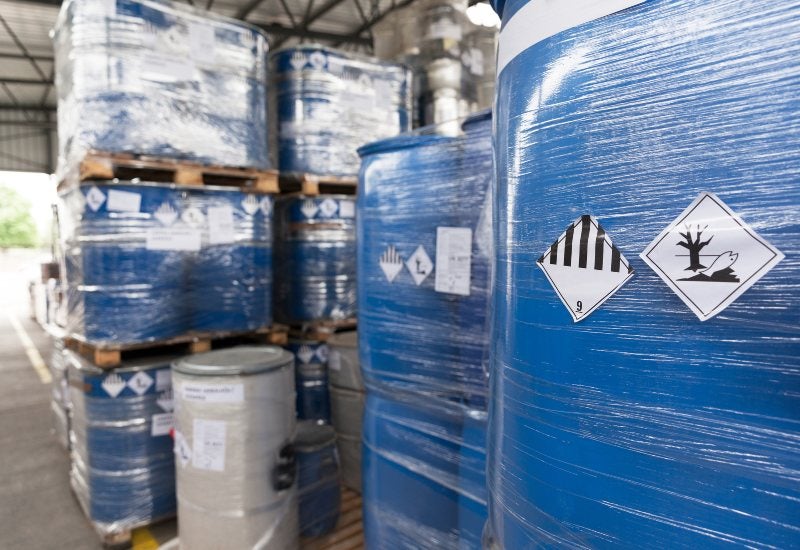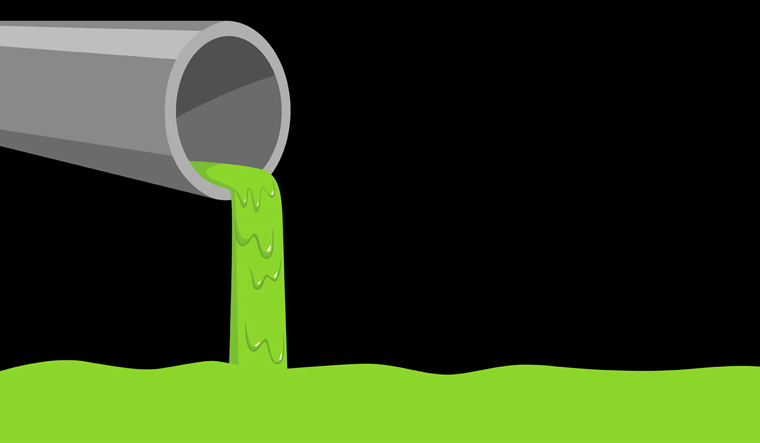Innovative Industrial Wastewater Treatment Solutions: Safeguarding the Atmosphere
Innovative Industrial Wastewater Treatment Solutions: Safeguarding the Atmosphere
Blog Article
Comprehending the Comprehensive Refine of Liquid Waste Disposal: Best Practices and Environmental Impact Considerations
The administration of fluid waste disposal is a complex issue that needs an extensive understanding of various best practices and their linked environmental effects. From the types of fluid waste created to the approaches used for collection, therapy, and final disposal, each action plays a crucial role in guarding ecosystems and public wellness. As regulatory criteria evolve and innovation advances, the discussion around these procedures becomes increasingly important. What implications do these adjustments hold for future sustainability initiatives, and just how can stakeholders ensure that they are appropriately addressed?
Sorts Of Fluid Waste
Understanding the various kinds of fluid waste is necessary for efficient management and disposal practices. Liquid waste can be broadly classified right into a number of kinds, each calling for one-of-a-kind handling and treatment techniques.
Industrial liquid waste typically has unsafe materials, including heavy metals, solvents, and chemicals, created throughout producing processes. These wastes demand strict regulatory compliance to safeguard human wellness and the environment. Domestic fluid waste mostly describes wastewater generated from families, consisting of sewage and greywater, which, although much less poisonous, can still present significant threats if improperly taken care of.
Agricultural fluid waste, consisting of runoff from farms, frequently contains plant foods and pesticides that can bring about ecological destruction if not dealt with appropriately. Medical liquid waste, created from medical care facilities, includes contaminated liquids such as bodily liquids and chemicals, requiring specialized disposal approaches to avoid infection and environmental contamination.
Lastly, oil and oil waste, commonly produced by dining establishments and auto sectors, can trigger severe blockages in sewage system systems if not taken care of appropriately. Comprehending these categories assists in targeted methods for therapy, conformity with laws, and efficient disposal techniques, inevitably promoting environmental sustainability and public health safety and security.

Collection Approaches
Reliable collection techniques are crucial for the appropriate administration of liquid waste, making sure that it is gathered securely and successfully before treatment or disposal. Numerous strategies are utilized depending on the type of fluid waste created, the volume, and the details features of the waste.
One common approach is making use of devoted collection storage tanks or sumps, which are created to record fluid waste at the resource. These systems typically integrate pumps that assist in the transfer of waste to larger storage space containers or therapy centers. Furthermore, mobile collection systems equipped with vacuum innovation are used in scenarios where waste is produced intermittently or in hard-to-reach areas.
For industrial setups, closed-loop systems can properly lessen spills and leaks, enabling the recovery and reuse of fluid waste. It is likewise important to educate workers on appropriate collection procedures to alleviate dangers related to dangerous materials.
Additionally, implementing normal maintenance routines for collection equipment makes sure optimal performance and safety. The combination of sophisticated surveillance systems can enhance collection effectiveness by supplying real-time information on waste degrees and potential dangers. Generally, reliable collection approaches are fundamental to sustainable liquid waste administration methods.
Therapy Processes
Treatment processes play a crucial function in the management of fluid waste, changing potentially dangerous materials right into safe effluents or recyclable resources - liquid waste disposal. These procedures can be generally classified into physical, chemical, and biological methods, each tailored to resolve details pollutants existing in the waste stream
Physical therapy techniques, such as sedimentation and filtration, work by eliminating put on hold solids and particulate matter. These strategies are typically the very first step in the treatment chain, successfully reducing the lots on subsequent processes. Chemical therapies involve making use of reagents to reduce the effects of damaging substances, precipitate heavy metals, or oxidize natural contaminants, thus improving the safety of the effluent.
Biological treatment procedures, including turned on sludge systems and anaerobic digestion, profit from the natural capacities of microorganisms to break down raw material. These techniques are specifically effective for wastewater consisting of naturally degradable pollutants. Advanced therapy modern technologies, such as membrane purification and advanced oxidation procedures, are increasingly utilized to accomplish greater levels of filtration.
Including a combination of these therapy methods not just ensures compliance with regulative criteria however additionally advertises environmental sustainability by recovering useful resources from liquid waste.
Disposal Options
Exactly how can companies guarantee the liable and safe disposal of liquid waste? Effective disposal alternatives are important for guarding public health and wellness and the environment. The primary techniques include land therapy, incineration, and disposal adhered to by discharge into metropolitan wastewater systems.
Land disposal includes the cautious containment of liquid waste in assigned garbage dumps, making sure that it does not seep right into surrounding soil my latest blog post or water. Incineration, on the other hand, subjects liquid waste to heats, transforming it into ash and gases, which require proper filtering to decrease exhausts. This approach appropriates for contaminateds materials that can not be treated through traditional means.
In instances where liquid waste can be treated, companies might go with biological or chemical treatment processes to neutralize damaging parts prior to releasing the treated effluent into local systems. This route generally aligns with regulatory needs, ensuring that the effluent meets safety criteria.
Inevitably, companies have to perform thorough analyses of each disposal choice to determine its stability, taking into consideration aspects such as waste composition, governing compliance, and prospective threats to health and wellness and the environment. By choosing a knockout post proper disposal approaches, services can contribute to a liable waste monitoring approach.
Environmental Influence
The environmental influence of liquid waste disposal is a critical factor to consider for organizations seeking to reduce their ecological footprint. Inappropriate disposal methods can lead to considerable contamination of water resources, soil deterioration, and adverse impacts on regional ecosystems. For example, unsafe fluids can seep right into groundwater, positioning dangers to alcohol consumption water supplies and aquatic life. Furthermore, the discharge of unattended or improperly treated waste right into surface waters can lead to eutrophication, bring about oxygen exhaustion and the subsequent death of fish and other organisms.

To mitigate these impacts, companies have to take on finest methods such as implementing strenuous waste therapy processes, advertising recycling and reuse, and adhering to regulative standards. By taking an aggressive method to liquid waste monitoring, entities can significantly minimize their ecological impact while supporting lasting growth objectives. Inevitably, a detailed understanding of the environmental impacts connected with fluid waste disposal is crucial for educated decision-making and accountable stewardship of all-natural sources.
Verdict
Effective management of fluid waste is critical for protecting ecological honesty and public health. Inevitably, try this website an extensive understanding of liquid waste disposal not only minimizes environmental impacts yet also fosters a commitment to accountable resource administration and environmental stewardship.
The monitoring of fluid waste disposal is a diverse issue that requires a thorough understanding of various ideal methods and their connected ecological influences. From the kinds of fluid waste generated to the methods used for collection, therapy, and last disposal, each action plays a crucial duty in guarding ecosystems and public health.The environmental impact of liquid waste disposal is an important factor to consider for companies looking for to lessen their environmental impact. Eventually, a detailed understanding of the environmental impacts connected with fluid waste disposal is essential for informed decision-making and liable stewardship of all-natural resources.
Ultimately, a comprehensive understanding of liquid waste disposal not just minimizes environmental effects however also promotes a commitment to accountable resource management and ecological stewardship.
Report this page